Wildlife monitoring is one of the most challenging and difficult tasks in a tropical country like India. Chilled winters, hot and humid summer, torrential rains, floods make the job challenging and adventurous. It requires extraordinary motivation and fitness to face day-to-day challenges.
In India, maximum protected areas’ boundaries were delineated without proper buffer, and hence, wildlife can directly roam the human habitations. Thus, surrounding fringe people have regular interactions with wildlife since the past.
Manas National Park’s boundary was delineated without buffer areas so the entire southern boundary is surrounded by human habitations. Wildlife often visits the nearby villages, however, the negative interaction of humans and wildlife is comparatively less than some other areas of Assam.
A panoramic view fo Manas Nationa Park
Wild to wild rhino translocation
The first two adult rhinos were translocated to Manas from Pobitora Wildlife Sanctuary on 12 April 2008. I joined the program as a rhino researcher and started to count every step of the activity of rhinos with a dedicated field team.
For operational purposes, we formed four teams to track the rhinos 24X7. I trained them to use modern tracking tools and scientific methods to monitor rhinos. The four-field teams alternately monitor the rhinos inside the jungle with ultimate passion and confidence.
Rhino Stray
On first September 2008 midnight, I was informed that one male rhino strayed to the eastern part of Manas that is the Bhuyanpara range. It was raining heavily and the team was unable to track it properly. Only directional antennae indicated information about the rhino stray.
I waited until the morning to recede rain. Early morning I got a message that the rhino reached almost 20km distance from the Manas and we immediately set out our journey to the same place.
People gathered to watch the rhino
I worried for the life and security of the rhino as well as the people. If something happened then it would jeopardize the entire rhino reintroduction program to Manas. I requested the park director to inform the police and paramilitary force to manage the situation.
The road condition was pathetic and it took almost 2 hours to reach that location called Dongpar. The rhino took shelter there inside a homestead under a bamboo grove.
More than five hundred villagers were gathered in the area without care for the presence of wild rhinos. Some enthusiast youths climbed trees and were daring each other to touch the rhino.
Gradually villagers from the nearby villages also came. I requested the police to keep the crowd away from the rhino.
People running behind the rhino
We called the park elephants to the place to push back the rhino to the park. Unfortunately, the rhino would not move out of the safe space, and until the evening, the rhino was there.
Information about the rhino spread like wildfire everywhere and people from 50km distance came to see it by hiring a bus. Thus, the place was becoming unmanageable with every second.
Spectators were unaware of the wild rhino’s behavior and they put effort to see the rhino from a close distance. We used loudspeakers to control and aware of the crowd and requested them to cooperate.
As expected, the rhino moved out from the bamboo grove as the dusk fell and started to walk towards the southern direction again. There was a clamor when the rhino moved out from the homestead. It walked through a backyard garden, defected, and then entered a waterhole.
The stray rhino
The villagers were curious about rhino defecation and collected every single drop of the dung. When asked, they told the dung was auspicious and would bring prosperity. Interestingly, villagers welcomed the rhino visit and encircled each rhino footprint with bamboo sticks to preserve it.
We were waiting to push back the rhino until late evening. As the villagers returned to their homes and the rhino moved out from the waterhole and started to graze.
Immediately, the team pushed it towards the north but it got scared and run speedily towards the south. It moved almost 5km distance from the previous location. We started tracking and following the direction, however, the team was tired and decided to halt for the night.
We didn’t expect the situation in the morning, and so, there was no food, no sleeping bag, a change of clothes, or anything with us. I decided to use the hood of my vehicle as to the bed but was forced to wake up at midnight due to rain.
Incidentally, I turned 30 under the raining sky and nowhere near my loved ones. For my birthday wish, I hoped for the safety of the rhino and us.
The next day morning, we located the rhino at almost 15km distance from the previous location and in similar situations. We waited the whole day due to the presence of an unmanageable crowd.
However, we were not able to push the rhino back due to the dark. We had tranquilizing guns and other equipment but due to the crowd and unfavorable situations, we could not capture the rhino.
The situation did not change for better for the following nights. Every night rhino would cover an average of 10-15km from the previous place toward the south with us on its trail, camping in the school campus, someone’s cottages, and sometimes inside our vehicles without regular food and enough drinking water.
The capture of the Rhino
The team was almost fatigued and tired after 10 days. We were starting to lose hope. The positive and negative speculation of local media also influenced our effort.
On the day 13th, the rhino crossed a fast-flowing river near Barnadi wildlife sanctuary and entered Bhutan. The river had rapid water currents that pushed us several meters downstream with elephants.
Luckily, we succeeded in pushing the rhino from the Bhutan hills and the rhino returned to a river island.
On the 15th day, the rhino reached another river island called Kalseni. It is almost 100km from the Manas National Park.
The Team decided to cordon the area with 12 patrolling elephants and with the support of police and paramilitary force; we prevented the crowd to enter that locality.
Late Dr. (Prof) Bijoy Dutta, the chief vet, decided to lead the operation.
Team formation
Dr. Dutta prepared three teams.
1. Capture team headed by Dr. (Prof) Bijoy Dutta
2. Logistic team headed by me
3. Transportation team headed by Mr. C.R Bhobora, deputy director, Manas Tiger Reserve.
Struggle to capture rhino
It was 2:00 pm when the capture team proceeded to capture the rhino. Rhino was wallowing a small waterhole within the island.
Rhino was startled and ran away as the team approached him. Due to the tall and dense grassland, the team missed the first two darts. The air was heavy with tension as only two darts remained to capture the rhino.
Thousands and thousands of people gathered to observe the capture. It was like a much-crowded cricket match and we were the player. These people also helped us to create a noise barrier to cordon rhino with this island.
People climbed the trees to watch the capture
Another dart missed the rhino. Now only one dart was there to tranquilize the animal and get it back to safety. It was like needing a six from the last ball to win the cricket match.

Some of the team members
The sun was setting and with daylight vanishing, it seemed impossible. Finally, Dr. Dutta requested to surprise the rhino for a moment with high beam light. A mahout pointed a searchlight directly to the rhino’s eyes making it struck for a few minutes.
The vet took the opportunity to hit the rhino on the neck, tranquilizing it. The neck is a good body part for tranquilizing Indian rhino.

Mahouts played a great role
The rhino staggered and ran away for about 40 meters from the darted location. It was a crucial time like a battlefield to recover the rhino and put him into a wooden crate.
The crate was 300m away but the elephant and excavator were unable to pull the sled. The team struggled to pull the rhino through the muddy surface. When we requested some villagers to help us and hundreds of villagers approached and helped to pull the rhino sled!
Many of them touched the rhino and thanked almighty for this opportunity to touch a live rhino. Some of them pulled out its hair from tail tip and eyelids.
It was not an easy task to pull more than 4000kg (3000kg rhino and 1000kg sled weight) over a muddy surface covered by dense grasses. Therefore, the process was slow and the rhino was about to reach the relapse period.
Dr. Dutta warned over the radio that if we did not reach within the stipulated time, he had to inject reversal. The park director ensured him that he would take the entire risk and let people reached the crate as soon as possible.
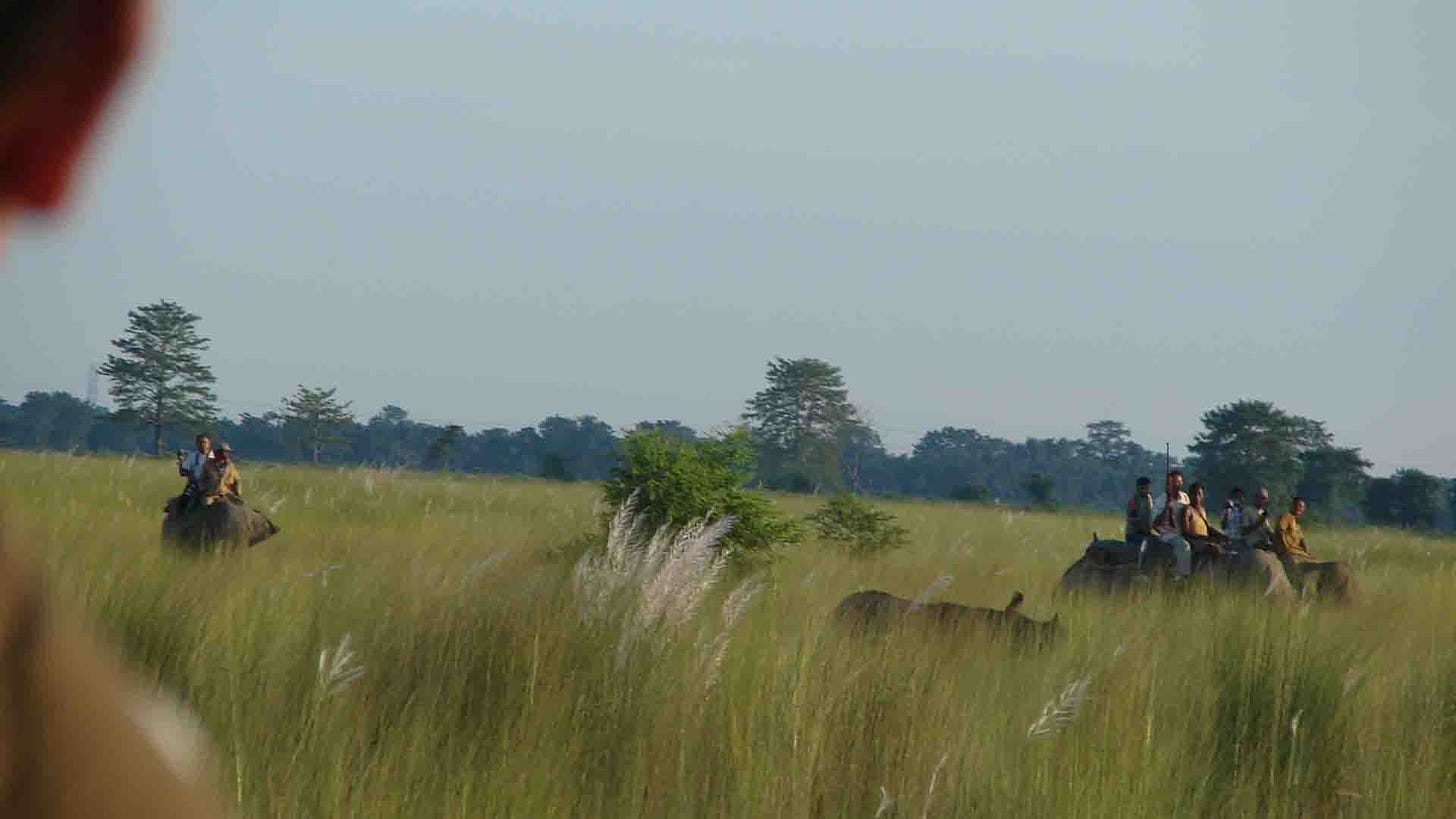
On the rhino trail
We took 1 hour 45 minutes to reach the crate location and crated the rhino. Dr. Dutta put reversal and fortunately, the rhino revived and stood up within minutes.
The moment the rhino was captured, everyone sighed relief and started returning to Manas National Park. The team reached Manas NP in the morning and immediately released the rhino in the jungle.
Learnings from that incident
There is no short cut for a wildlife career. If you want to join wildlife conservation, you need to prepare for preservation, hard work and should believe in team spirit. That is everything I learned in the 15 days after a stray rhino.
We also understood that common people in Assam have deep love and empathy for wildlife including rhino. The deep-rooted essence conservation spirit in general mass might gain much support from the thousands of villagers during the days of rhino.
As this particular rhino was translocated from the Pobitora wildlife sanctuary and he was moving almost in the same direction towards its home at Pobitora. I am hopeful that in the future we may find out such research findings and understand the straying behavior of the rhinos. There is much scientific study necessary to understand the behavior of the rhinos for better conservation implications. Like the tiger, we are yet to understand the ‘homecoming’ instinct of rhinos.

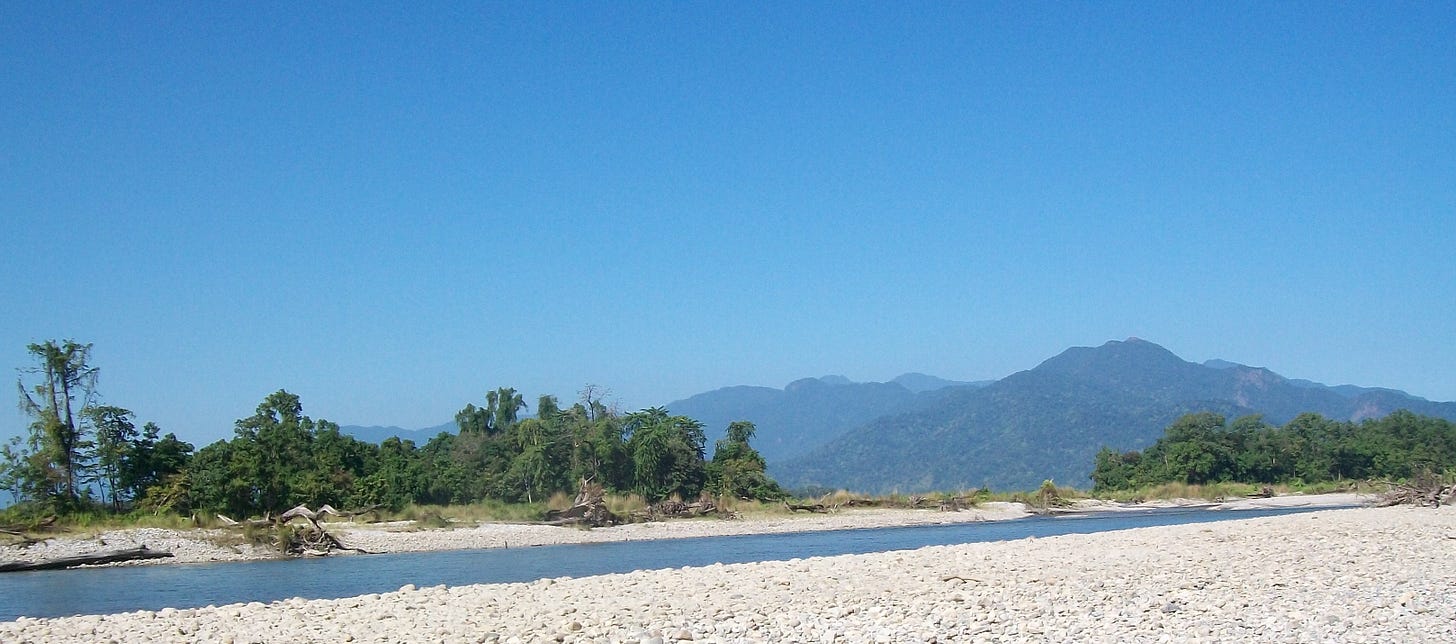
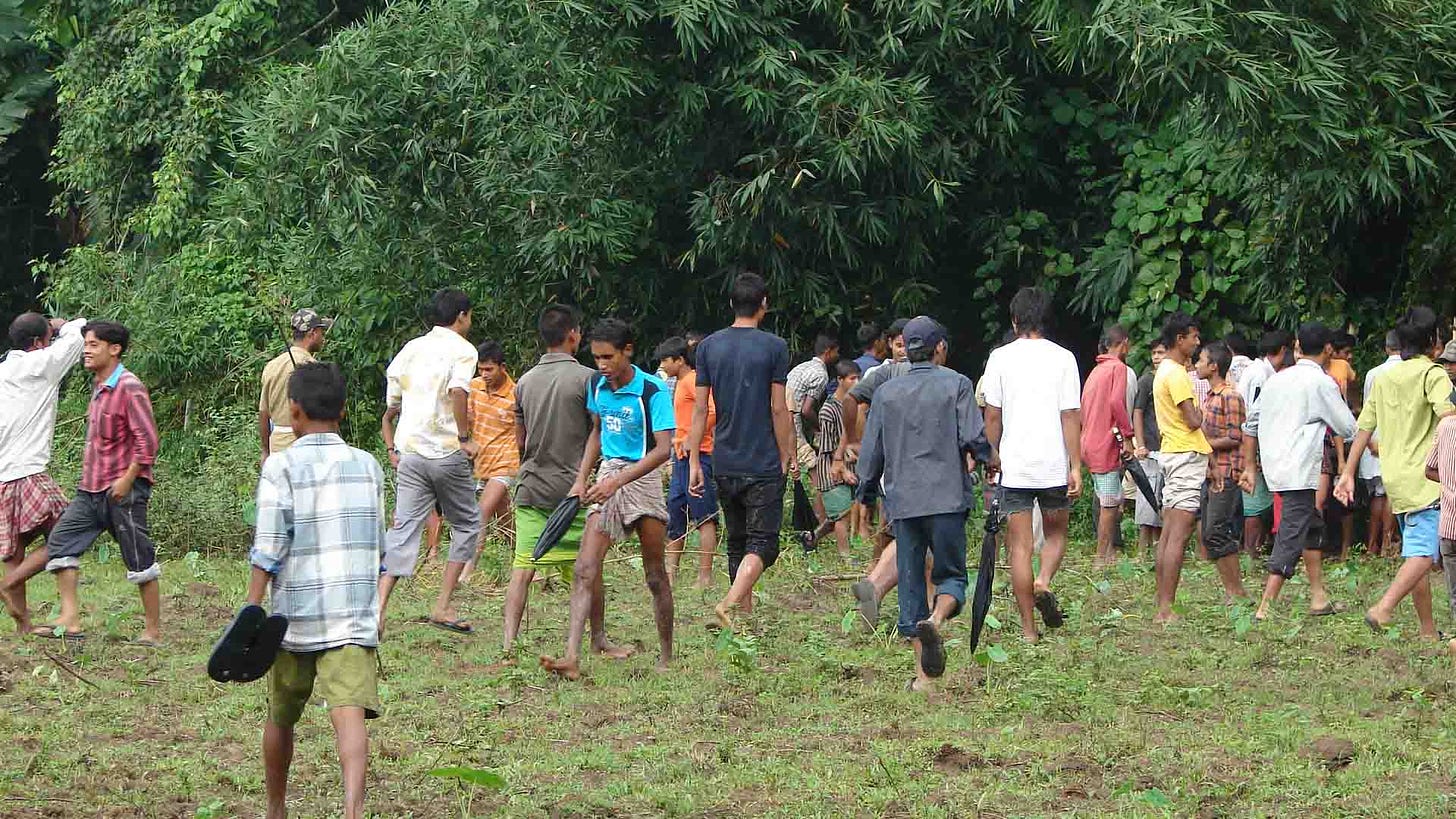
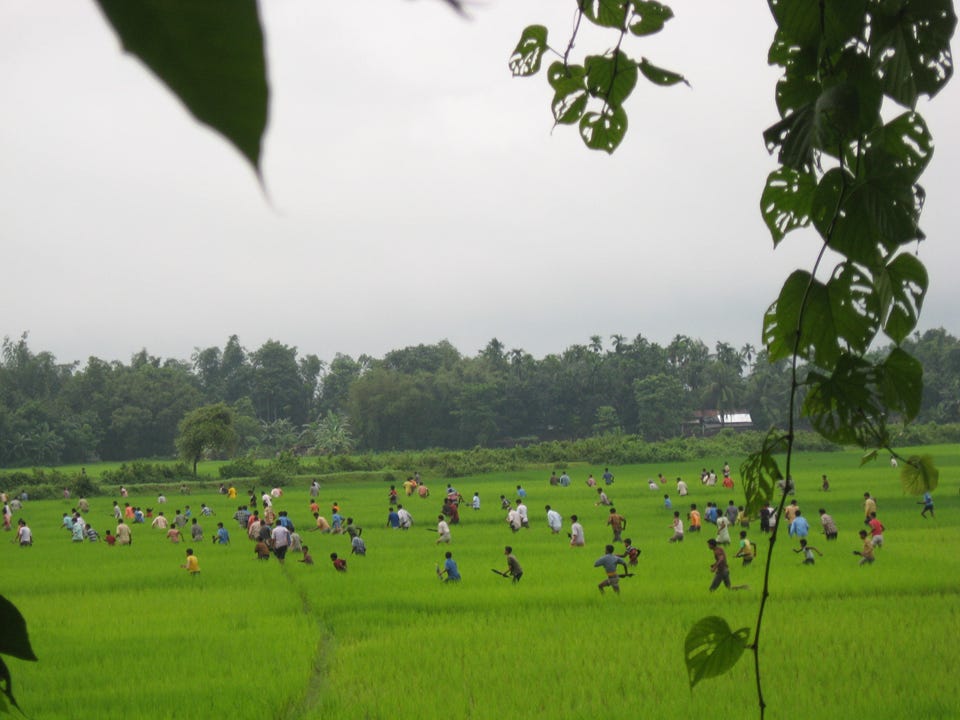

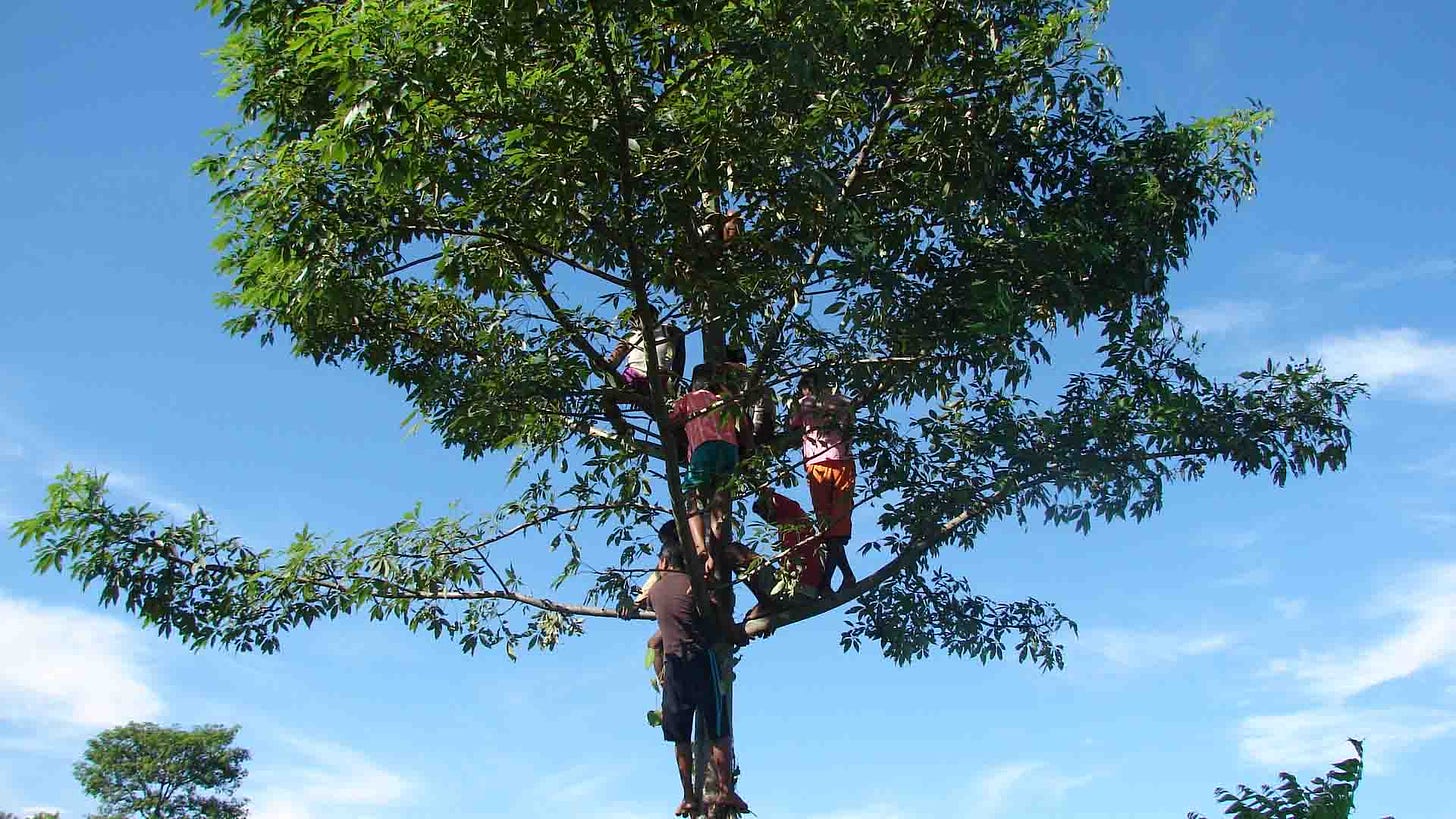
Comments
Post a Comment